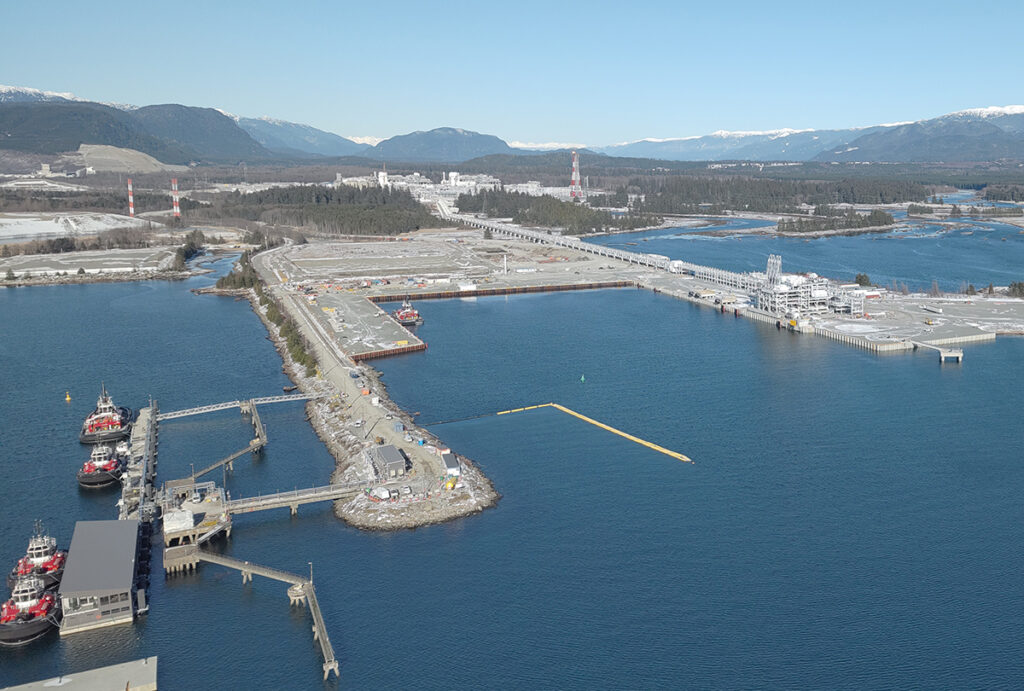BC is set to launch LNG exports within weeks, marking a major push to diversify Canada’s energy markets amid growing US trade uncertainty
By Margareta Dovgal

LNG Canada’s $40-billion plant is but weeks away from shipping its first export cargo.
The destination has not been named, but the plant near Kitimat is in final testing stages, having imported a cargo of Australian LNG to run through the facility and cool it in preparation for the launch.
LNG Canada can produce up to 14 million tonnes of LNG a year. And it is actively looking into Phase 2 expansion, which would double capacity to 28 million tonnes a year.
The federal government announced during the April 28 election campaign that it supports this doubling of output by LNG Canada , and sees it as “likely” as the country pushes to diversify exports away from the US. The imperative for diversification of markets has never been clearer, as the second Trump administration vociferously signals its abandonment of the economic and trade order that has defined Canada’s place in the world.
The major partners in LNG Canada are Shell (40 per cent), Petronas (25 per cent), PetroChina (15 per cent), Japan’s Mitsubishi Corporation (15 per cent) and the Korea Gas Corporation (5 per cent).
LNG Canada has been working on its project since 2018 , with the support of the 2,100-member Haisla Nation on whose territory the plant and its shipping dock are located.
The Haisla have drawn employment and benefits from the project. So have 20 First Nations along the 670-kilometre Coastal GasLink pipeline that feeds LNG Canada; they also have an option for a 10 per cent equity stake in the pipeline that will provide them with long-term revenues for their communities.
Meanwhile, the Haisla have begun preliminary construction of their own floating LNG plant in their traditional territory and waters.
Cedar LNG aims to produce three million tonnes a year, starting in 2028. It will also be fed gas from the Coastal GasLink pipeline.
Pembina Pipeline Corporation is a 49.9-percent partner in Cedar LNG. The project has signed a 20-year deal with ARC Resources for the supply of 50 per cent of the natural gas needed to turn into LNG, and Pembina will arrange for the other 50 per cent.
Farther ahead is Woodfibre LNG, under construction (which started in September 2023) on Howe Sound, 70 km north of Vancouver. Also in early construction is the associated Eagle Mountain-Woodfibre natural-gas pipeline.
For Woodfibre’s plant, 19 prefabricated modules (some weighing more than 10,000 tonnes) are under construction at a yard in China.
The first modules are to arrive this summer. Deliveries will continue throughout this year and into early 2026.
Woodfibre aims to produce some 2.1 million tonnes of LNG a year for export, starting in 2027.
The Haisla are not the only Nation aiming to export LNG. The Nisga’a Nation is in BC government assessment processes for its own Ksi Lisims LNG project on the northwest BC coast.
Ksi Lisims plans to produce 12 million tonnes of LNG per year, beginning in 2028 or 2029, with Western LNG of Texas and Rockies LNG as partners. Rockies LNG is a group of companies that produce half of Canada’s natural gas.
Ksi Lisims’s floating plant will be fed by a rerouted PRGT pipeline project, originally planned to serve a now-shelved LNG project at Prince Rupert. Ksi Lisims is awaiting a decision from the BC Environmental Assessment Office on whether the pipeline project had made a “substantial start” under its previous owner, TC Energy.
FortisBC is working toward a new expansion of its Tilbury LNG project in Delta, and on a marine jetty and terminal on the nearby Fraser River.
The Tilbury facility has been creating LNG since 1971, storing, and then supplying, natural gas for domestic use in homes and businesses.
In 2017, the Tilbury facility also shipped the first BC LNG to be exported to China , a single ISO container of 17 tonnes. And since that year Fortis has also been sending LNG, by truck, to refuel BC Ferries and Seaspan cargo ferries that use LNG.
The first round of expansion at Tilbury was a $400-million project that included a 46,000-cubic-metre storage tank , “enough to keep a community of 19,000 warm for 45 very cold days”.
For Phase 2, FortisBC plans a new storage tank that can hold up to 142,400 cubic metres of LNG. Fortis will also increase Tilbury’s production to 2.5 million tonnes a year, up from 0.25 million tonnes.
Margareta Dovgal is Managing Director of Resource Works. Based in Vancouver, she holds a Master of Public Administration in Energy, Technology and Climate Policy from University College London. Beyond her regular advocacy on natural resources, environment, and economic policy, Margareta also leads our annual Indigenous Partnerships Success Showcase. She can be found on Twitter and LinkedIn.
Share This:





 CDN NEWS |
CDN NEWS |  US NEWS
US NEWS 




























